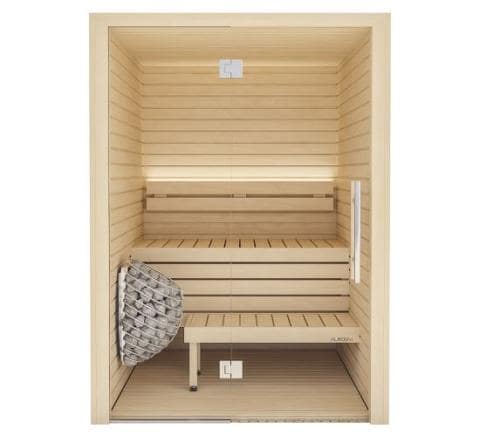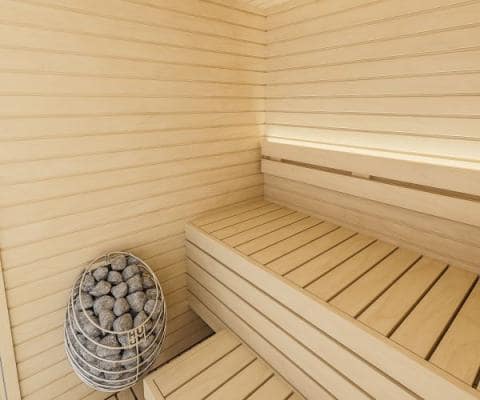Traditional Sauna - Questions
Traditional Sauna - Questions
Blog Article
The Greatest Guide To Traditional Sauna
Table of ContentsTraditional Sauna for DummiesAll about Traditional SaunaUnknown Facts About Traditional SaunaExcitement About Traditional SaunaTop Guidelines Of Traditional Sauna
The majority of the weight lost in a sauna is water loss and is re-gained upon rehydrating. Nonetheless, without a doubt sauna can be a fundamental part of a healthy weight management program. To consider the differences between standard and IR saunas, I will separate these right into verifiable, academic, and produced differences.Hence, the hottest point in the saunawhich goes to the ceiling straight over the sauna heateris usually in between 185 and 190 F. Claims that a standard sauna goes beyond 200 F is just not real and not applicable for electric saunas marketed in the US. The temperature for a far-infrared sauna is normally established in between 120 and 140 F; nonetheless, unlike the typical sauna, the goal in and IR space is not to accomplish a heat.
As a result of this, the temperature distinction is nearly irrelevant, considering that profuse sweating causes both sauna kinds, but the approach of warming the body is different. In an IR sauna the bather will certainly really feel hot and will certainly sweat a lot, but at a lot reduced temperature levels (Traditional Sauna). Thus, if the objective is to spend longer time periods in the sauna, the IR sauna is an excellent choice
When a conventional sauna has actually been correctly heated, the sauna wall surfaces are warm, the air temperature level has actually achieved established temperature and the rocks are extremely heated. As a fascinating side note, the warmed wall surfaces and the rocks are emitting far-infrared heat, incorporated with the warmed air, to develop an "enveloping warmth".
Traditional Sauna Can Be Fun For Everyone

When the heat is attained, the components cycle on and off to maintain the heat. A lot of conventional sauna customers appreciate putting water over the rocks to produce vapor to elevate sauna humidity levels. The advantages of pouring water over the rocks include: making the room more comfortable, moistening the nasal flows, and permitting the use of aromatherapy by mixing important oils with the water.

When the power enters the body, it triggers the body temperature to increase and eventually leads to sweating. In an infrared sauna it is necessary for the emitters/heaters to remain on nearly frequently. Given that there is no mass of rocks to preserve warm, the sauna will certainly cool down if the emitters shut down.
As discussed over, the sauna bather in an infrared area wishes to place himself in front of running emitters to obtain maximum benefit from the warmth. The home heating time for the 2 rooms can be very various, depending upon exactly how the spaces are made use of. For a conventional sauna, a bather ought to permit 30-40 mins for the space to achieve a wanted temperature and to effectively pre-heat the rocks.
Facts About Traditional Sauna Uncovered
A well constructed sauna will usually achieve a temperature level of 150-160 F in about 30-40 minutes. For hotter temperatures, the space might need to warm for a longer duration.

Conventional saunas have a tendency to be larger (hence utilize even more electrical energy) than infrared saunas, although typical saunas are definitely readily available in one and two individual sizes as well. For a two-person conventional sauna, 5x6 or 5x7 size is most popular. The top bench can comfortably seat 2 or three people and is likewise enough time to relax throughout the sauna session.
Indicators on Traditional Sauna You Need To Know
The typical cost per kWH of electricity in the united state is about $0.11, so a 4.5 kW heating system will set you back around $.50 to run for one hour, if the heating unit runs continuously for one hour. Usually a sauna heater will certainly run for 75% of the initial hour and 50% of succeeding hours on considering that official source the aspects cycle once the established temperature is achieved.

There is a rarely talked about distinction in the social experience between the 2 spaces. While our society has actually lost a few of the social advantage of the conventional sauna experience, it can be extremely socially rewarding (Traditional Sauna). From family members time in the sauna, to heart-felt discussions with loved ones, to sauna partiesthe typical sauna experience can lead to intimate interacting socially
Examine This Report on Traditional Sauna
Most higher end infrared spaces include tinted light treatment, noise systems and full-glass fronts.
Report this page